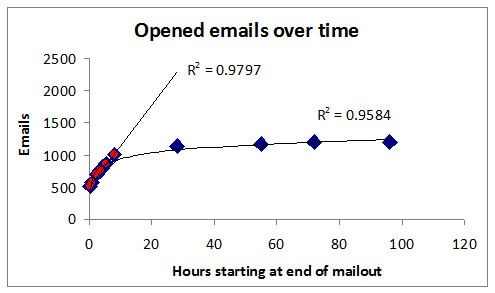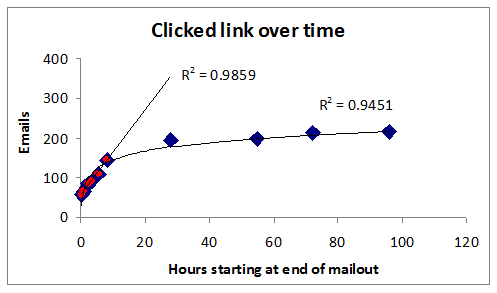-
Subject: #Association of Tumor Markers With Pancreatic Cancer
Dear Dr. Smith: I am writing to you in reference to your paper #Association of Tumor Markers With Pancreatic Cancer, appearing in Clin Cancer Invest 2019 Apr;250(19):234-226. in which you provided this email address to contact you.
I have recently published a review on the RECAF cancer marker that might be of your interest. RECAF, which stands for RECeptor for AFP (alpha-fetoprotein) is an oncofetal pan-tumoral antigen. Besides binding AFP, RECAF is a completely different molecule from AFP.
To the best of my knowledge, this is the first comprehensive review on this marker. In addition to the literature analysis, this book chapter contains a great deal of new data, not published anywhere else, on its biology as well as on its potential for cancer diagnosis and treatment.
You can find the Open Access version of this article at:
I would very much appreciate your comments.
In the meantime, I remain sincerely yours,
Dr. Ricardo Moro
xxxxxxxxx xxxxxx xxxxxx xxxxxxx Centre, xxxxxxxxx xxxxxx xxxxxx xxxxxxx, Canada.

Legal stuff: This is a commercial notice. To stop receiving emails from this campaign, click here.
 #The title of the publication has been changed to protect the recipient's confidentiality.
#The title of the publication has been changed to protect the recipient's confidentiality.
-
From isNOTspam:
====================
Summary of Results ====================
SPF Check : pass
Sender-ID Check : pass
DKIM Check : pass
SpamAssassin Check : ham (non-spam)
From mail-tester:
Good stuff. Your email is almost perfect
Score: 7.6/10
-
A week after mail out:
Total emails sent: 3,400 All bounces (approx): 170 Valid emails sent: 3,230 Complaints as spam after 4 days: 6 Delete me from list after 4 days: 9 Out-of-office (approx): 20 Email Replies (1 week): 43 Replies/clicked link: 19.6%
Results over time:
Hours after send Opened Clicked link Opened/Sent Clicked/Sent Clicked/Opened 0.25 506 57 15.67% 1.76% 11.26% 1 563 67 17.43% 2.07% 11.90% 2.25 699 86 21.64% 2.66% 12.30% 3.5 765 92 23.68% 2.85% 12.03% 5.5 856 110 26.50% 3.41% 12.85% 8 1010 144 31.27% 4.46% 14.26% 28 1138 194 35.23% 6.01% 17.05% 55 1166 200 36.10% 6.19% 17.15% 72 1193 212 36.93% 6.56% 17.77% 96 1199 215 37.12% 6.66% 17.93% 168 1207 219 37.4%§ 6.78% 18.14% - "Hours after send" means: Time from sending the last email.
- "Opened" means: Either the recipient"s mail software automatically opened the email or the recipient clicked on the link to see the picture or the recipient clicked the link to read the article.
- "Clicked link" means: The recipient clicked on the link to the article, in this case a full text pdf (could also be any other link including a link to the Pubmed® abstract).
- "Opened/Sent" means: The percentage of mails that were opened divided by the number of emails sent that did not bounce (3,230)
- "Clicked/Sent" means:The percentage of clicks on the link to the article (could be considered as "views") divided by the number of emails sent that did not bounce (3,230).
- "Clicked/Opened" means the percentage of article views per recipient who opened (read) the email
§The average percentage of opened emails in the industry is ~24%. We reached 37%.

-



A second mailout restricted to the previous recipients who had not visited the article was carried out a month later. Three days later the accumulated results improved as follows:
Opened / Unique emails sent: 47.4% Clicked link / Opened: 25.5% Replies / Clicked link: 45.4% NOTE: Part of the increase is due to the accumulation of visits and replies over the period of a month following the first mail out.
-
- After the second mailout, almost 50% of recipients opened the email.
- Of those, ~25% opened (or read) the article.
- Of the recipients who read the article, ~45% sent feedback to the sender.
- The response for both opening the email and clicking on the link was linear during the first 8 hours; thereafter it became logarithmic.
- Complaints and 'remove me from list' requests were negligeable (0.19% and 0.28% respectively in the first mailout, and 0.19% and 0.64% respectly for the accumulated two mailouts).
- In addition to the reads of the emailed articled, a significant increase (310%) in the reading of previous papers by the same author was noticed.
- Among the replies, 7 recipients expressed an interest in establishing a collaboration with the author of the article (the email sender).


-

Mailer Ltd. Campaign Report http://mailer.ltd Campaign start date: Date and Time [1] - Report date: Date and Time Client's name: Ricardo Moro Client's contact: Ricardo Moro Client's address: 1234 Imaginary Dr., Greensborough, C4C 4H4, BC, Canada Client' email: clientsname@hotmail.com Campaign name: Nova_RECAF_1 Keywords: ((AFP OR alpha-fetoprotein OR "cancer marker" OR "tumor marker" OR "tumour marker")) AND ("2014/01/01"[Date - Publication] : "3000"[Date - Publication]) [2] - Mail outs in this campaign: 5 [3] - Total number of emails sent: 5942 [4] - Number of unique emails sent: 2972 [5] - Rejected email addresses 188 [6] - Number of valid unique emails sent: 2784 [7] - Opened (read) emails: 1335 [8] - Unique clicks to visit the page of interest: 352 [9] - Replied to sender from all mailouts in this campaign: ~153 Opened / Unique emails sent: 48.0% Clicked link / Unique emails sent: 12.6% Clicked link / Opened: 26.4% Replies / Clicked link: 43.5% EXPLANATIONS: [1] - The duration of the campaign = Report date - Campaign start date. [2] - A campaign may consist of a single mail out or multiple mail outs. It is impossible to know the number of mail outs in a campaign by looking at the indexes since they might not be sequential. This parameter shows the actual number of mailouts. [3] - The aggregate number of all the emails sent out throughout the campaign. Includes repeats. [4] - The aggregate number of unique emails sent out throughout the campaign. Does not include repeats. [5] - The aggregate of all rejects including complaints, 'remove me from email list' and the immense majority, bounces from non-existing email addresses. If there are multiple mail outs, the rejected addresses from the previous email are not resent. [6] - Total number of unique emails sent - Rejected email addresses. [7] - Opened or read emails are emails that were accepted by the recipients email software and either automatically opened and displayed or actively opened by the recipient. [8] - Unique recipients who clicked the web link to the page of interest (Pubmed® article, congress page, survey page, etc. [9] - This number is the aggregate of all the replies received from the begining of the campaign until the day of this report. We only gather those responses that landed in our email address account, which we forward to the client. We have no way to monitor emails sent directly to a client's email address. Also, some Out of office' replies get through our filter and therefore this value is approximate. NOTE: The rest of the Excel® file with the recipients' names and addresses is omitted for confidentiality reasons.
-
Dear Ricardo,
thanks a lot for your friendly email and thanks a lot for this very interesting article.
In urology we use AFP for germ cell cancer in routine.
I think it could be of big interest to evaluate the worth of RECAF as additional marker in that context.
By the way I have seen that you will also ***** meeting in November! As you maybe know I am also member of the scientific committee and chair of the bladder cancer session.
In that context it would be great to talk to you personal to discuss these and other markers we could maybe include in a clinical trial or something else.
I hope to hear from you soon again.
Best regards,
Dr. *******
Frankfurt, Germany
Good morning Professor Ricardo Moro
Thank you very much for your information about RECAF. No doubts, an interesting biomarker to develop an analytical method of detection.
I'm going to read your review and chapter to internalize in this new marker and the new data.
Best regards and thank you very much for the interesting information.
Dr. *******
San Luis, Argentina.
Dear Dr. Moro,
Thank you for teaching about RECAF with attaching your manuscript.
It was such a surprise and delight to receive your meaningful publication. To tell you the truth, I still cannot clarify how AFP affect Notch signaling which in our report, associated with difference of AFP production status represented different pattern of liver cancer characteristics. Your manuscript regarding AFP receptor, binding factor, may be useful way for resolving this mechanism. Thank you so much for all your introducing. I hope we will discuss again on our further project.
Sincerely,
Dr. *******
Fukuoka, Japan.
Dear Ricardo,
thank you s much for reaching me out.
I would likely missed it without your notice.
I will read it with great interest
Many thanks again
Best
Dr. *******
Torino, Italy
Dear Dr Moro,
I have read your review with great interest. I must admit that I never heard of RECAF before, so I have learned a lot from your paper. To my knowledge AFP receptors were never studied in testicular germ cell tumours.
Many thanks!
Dr. *******
Copenhagen, Denmark
Dear Doctor Moro,
Of course, I will be interested in reading your article that will provide new extend to the topic of tumor markers.
Sincerely yours.
Dr. *******
Paris, France

Dear Dr. Moro,
First of all, I'd like to thank you for your email. And with great pleasure and joy I read it and I will certainly read your book chapter.
In advance, I have taken a look and realize that there is a lot of important information and ideas will come up that we can do in collaboration.
Please, give me until Sunday to do a reading and contact you again.
Once again, thank you very much for the kind invitation.
Dr. *******
Sao Paulo, Brazil.
Dear Dr. Moro,
Thank you so much for sharing with me your excellent review article!
Sincerely,
Dr. *******
Taipei, Taiwan
Dear Dr Moro,
You wrote a valuable contribution to Cancer Science. I really appreciate your kindness to send me your work. I really want to work with you. I will work on different CA tissues and your knowledge is very important. I work with aflatoxins that are food carcinogens and I am sending you some of my works so you think if we can work together in a project.
The best for you.
Dr. *******
Mexico City, Mexico
Dear Ricardo
Sincere thanks for reaching out and sharing your review
This is without doubt worth exploring.
Through our translational liver cancer research group we have developed a robust bio repository from liver cancer patients
Specimens include liver tumor tissues, blood samples, saliva samples and breath exudate samples
Looks like RECAF has been assessed in different human biospecimens...What would be in your view a next step towards diagnostics or therapeutics through which our groups could collaborate?
We like to have outside researchers/innovators visit us and share their experiences
Eager to hear your thoughts
Sincerely
Dr. *******
Dear all [forwarded to coworkers], please see below email and attachment from Dr Moro
Thank you
Dr. *******
Cleveland, OH, USA
Dear Moro,
This is a very interesting chapter. Is this new RECAF marker readily available outside North America? Do you think we have chance to collaborate?
Thank you very much for letting me know this new info.
BR,
Dr. *******
Hong Kong, China
Dear Dr. Ricardo Moro:
Thank you for your email. Your article is interesting and fully comprehensive.
I look forward to seeing more innovative ideas and cutting-edge works from you,
Best regards,
Tainan, Taiwan
Dear Dr. Moro,
I read your article about the RECAF, it is a very nice review and I learned a lot. The liver cancer guidelines have not been changed much for the past 10 years, there is a great need for new approach. Your review about the AFP receptor is excellent. The possible use in diagnosis and potential use in therapy is excited. I’m more than happy to keep in touch with you and share our ongoing researches.
Dr. *******
New Hampshire, USA
